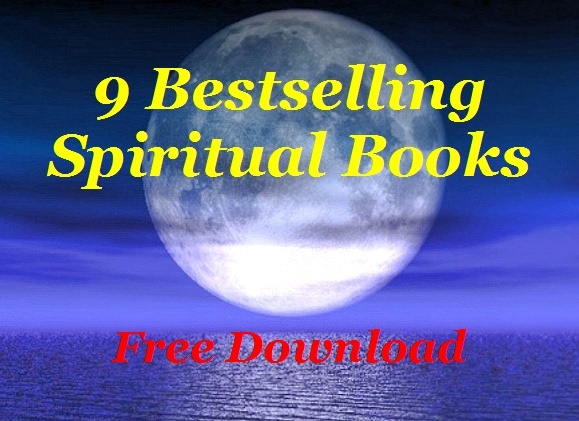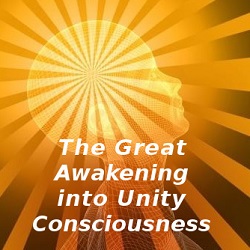9 Free Bestselling Spiritual Books
That Can Change Your Life!
Written by Rev. Dennis Shipman
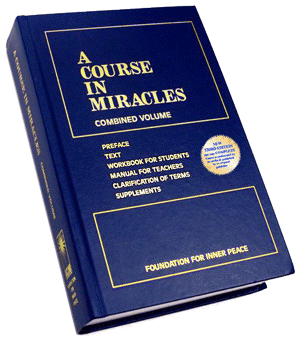
"A Course in Miracles" by Helen Schucman and William Thetford
Helen Schucman described an “inner voice” which she identified as Jesus that guided her writing for this book.
I began reading ACIM the year I moved to Hawaii in 1988. I never stopped reading it, and I’ve never finished reading it yet. It’s one of those books that I read a few passages, then stop to contemplate what I’ve read, how it relates to my life, then come back to it later and repeat the cycle. I don’t read it in a logical sequence from front to back. I find a topic that resonates with me, wherever it is in the book, and go from there. I’ve learned a lot from this book, and its words of wisdom have changed my life.
The book contains a self-study curriculum to bring about what it calls a "spiritual transformation." It consists of three sections entitled "Text," "Workbook" and "Manual for Teachers." Written from 1965 to 1972, some photocopies of the first edition were distributed before it was officially published in 1976 by the Foundation for Inner Peace. The copyright and trademarks, which had been held by two foundations, were revoked in 2004 after lengthy litigation because the earliest versions had been circulated without a copyright notice. Thus, it fell into “public domain.” I’ve written a few songs based on its passages. For example, “The Ancient Song” music video on the home page of this website is based on ACIM.
Throughout the 1980s annual sales of the book steadily increased each year; however the largest growth in sales occurred in 1992 after Marianne Williamson discussed the book on The Oprah Winfrey Show, with more than two million copies sold.
According to the book’s preface, ACIM began with the sudden decision of two people to join in a common goal. Their names were Helen Schucman and William Thetford, Professors of Medical Psychology at Columbia University’s College of Physicians and Surgeons in New York City. They were anything but spiritual. Their relationship with each other was difficult and often strained, and they were concerned with personal and professional acceptance and status. In general, they had considerable investment in the values of the world. Their lives were hardly in accord with anything that ACIM advocates. Helen, the one who received the material, describes herself:
“Psychologist, educator, conservative in theory and atheistic in belief, I was working in a prestigious and highly academic setting. And then something happened that triggered a chain of events I could never have predicted. The head of my department unexpectedly announced that he was tired of the angry and aggressive feelings our attitudes reflected, and concluded that, “there must be another way.” As if on cue I agreed to help him find it. Apparently ACIM is the other way.”
The whole writing process took about seven years. Helen wrote down what “the Voice” said, and Bill typed it up from her notes. The material is substantially unchanged. Only a few minor editorial changes have been made. The work is not intended to become the basis for another cult. Its only purpose is to provide a way in which some people will be able to find their own Internal Teacher.
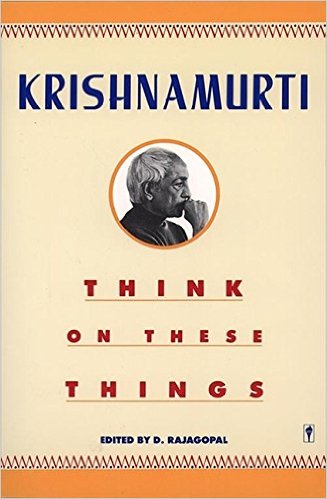
Think on These Things
by J. Krishnamurti
I read this book in 1967 – three years after its publication in 1964 – when I lived in an Army tent that held 20 soldiers at the Southeastern Signal School in Augusta, Georgia at the height of the Vietnam war – before I shipped out to my duty station in Seoul, Korea. In an unpopular war, with the assassinations of US. President John F. Kennedy (1963) and former Attorney General Robert F. Kennedy (1968) and Martin Luther King Jr. (1968), with North Korea’s attempt to kill the South Korean President and the Pueblo Incident (both 1968), needless to say, this book had a devastating and profound positive effect and psychological shift on my state of mind.
“Think on These Things” is Krishnamurti’s most popular book. It is based upon his talks to teachers, parents and students about the important things in life. Because his audience is a mixture of those new to his teachings (the young) and people who know them already, this book goes into depth – but in simple words. In this book, J.K. says, among other things, “It is no measure of health to be well adjusted to a profoundly sick society.”
Jiddu Krishnamurti (1895-1986) was a speaker and writer on matters that concerned humankind. His words were often mistaken by those on spiritual or philosophical subjects, which he regarded as other fragments of thought. In his early life he was groomed to be the new World Teacher but later rejected this mantle and withdrew from the organization behind it. His subject matter included psychological revolution, the nature of mind, meditation, inquiry, human relationships, and bringing about radical change in society. He constantly stressed the need for a revolution in the psyche of every human being and emphasized that such revolution cannot be brought about by any external entity, be it religious, political, or social.
Krishnamurti was born in British India and in early adolescence, he had a chance encounter with prominent occultist and theosophist Charles Webster Leadbeater on the grounds of the Theosophical Society headquarters at Adyar in Madras. He was subsequently raised under the tutelage of Annie Besant and Leadbeater, leaders of the Society at the time, who believed him to be a "vehicle" for an expected World Teacher. As a young man, he disavowed this idea and dissolved the Order of the Star in the East, an organization that had been established to support it.
He said he had no allegiance to any nationality, caste, religion, or philosophy, and spent the rest of his life travelling the world, speaking to large and small groups and individuals. He wrote many books. Many of his talks and discussions have been published. His last public talk was in Madras, India, in January 1986, a month before his death at his home in Ojai, California.
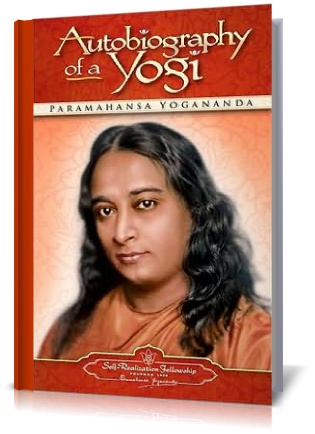
Autobiography of a Yogi by Paramahansa Yogananda
I read this book in 1969, and was very impressed. It and several other books by Yogananda gave me huge amounts of inspiration to wholeheartedly pursue the spiritual path. I stayed with Self-Realization Fellowship, founded by Yogananda, for 10 years. What captured my interest the most was his teachings on God-realization, and the unity of the original teachings of Jesus Christ and the original Yoga taught by Bhagavan Krishna. For a former-altar body raised in the Catholic religion, this blew my mind!
“Autobiography of a Yogi” (1946) is the most popular of Yogananda's books. The book is an introduction to the methods of attaining God-realization from the spiritual thought of the East, which had only been available to a few in 1946. It introduces the reader to the life of Paramahansa Yogananda (1893-1952) and his encounters with spiritual figures of both the East and West. The book begins with his childhood family life, to finding his guru Sri Yukteswar, to becoming a monk and establishing his teachings of Kriya Yoga meditation in America.
The book has been in print continuously since its publication in 1946, and highly acclaimed as a spiritual classic. It has sold more than four million copies and counting, and translated into 34 languages.
Philip Zaleski, while with Harper Collins Publishers, designated it as one of the "100 Most Important Spiritual Books of the 20th Century." It is included in the book “50 Spiritual Classics: Timeless Wisdom from 50 Great Books of Inner Discovery, Enlightenment and Purpose” by Tom Butler-Bowdon.
According to Philip Goldberg, who wrote American Veda, "Self-Realization Fellowship which represents Yogananda's Legacy is justified in using the slogan, "The Book that Changed the Lives of Millions." In 1999, it was designated as one of the "100 Most Important Spiritual Books of the 20th Century" by a panel of theologians and luminaries convened by Harper Collins publishers. According to Project Gutenberg, the first edition is in public domain and at least five publishers are reprinting it and four post it free for online reading.
In 1917, Paramahansa Yogananda began his life's work with the founding of a how-to-live school for boys in India, where modern educational methods were combined with yoga training and instruction in spiritual ideals. In 1920, he was invited to serve as India's delegate to an International Congress of Religious Liberals convening in Boston. His address to the Congress, on “The Science of Religion,” was enthusiastically received. For the next several years he lectured and taught across the United States.
In 1920, he founded Self-Realization Fellowship, and five years later established its world headquarters at Mount Washington – a neighborhood in the San Rafael Hills of Northeast Los Angeles, California USA. Founded in 1909, it is a historic area with, among other things, one of the three steepest streets in Los Angeles.
On 7 March 1952, he attended a dinner for the visiting Indian Ambassador to the US, Binay Ranjan Sen, and his wife at the Biltmore Hotel in Los Angeles. At the conclusion of the banquet, Yogananda spoke of India and America, their contributions to world peace and human progress, and their future cooperation, expressing his hope for a "United World" that would combine the best qualities of "efficient America" and "spiritual India."
According to an eyewitness – Daya Mata, a direct disciple of Yogananda, who was head of the Self-Realization Fellowship (1955–2010) — as Yogananda ended his speech, he read from his poem My India, concluding with the words "Where Ganges, woods, Himalayan caves, and men dream God—I am hallowed; my body touched that sod.” As he uttered these words, he lifted his eyes to the Kutastha center (the mind’s eye between the eyebrows), and his body slumped to the floor." Followers say that he entered mahasamadhi – a yogi’s final exit from the body.
His funeral service, with hundreds attending, was held at the SRF headquarters atop Mt. Washington in Los Angeles. Yogananda's remains are interred at the Forest Lawn Memorial Park in the Great Mausoleum (normally closed off to visitors but Yogananda's tomb is accessible) in Glendale, California. Forest Lawn officials were astonished at the state of perfect preservation of Yogananda’s body for 20 consecutive days. There were no visual signs of decay in the body, no physical disintegration, no indication of mold, no visible desiccation (drying up) of the bodily tissues, no odor of decay.
Forest Lawn officials sent SRF a notarized letter pertaining to these phenomena which was reprinted in later editions of the book: “The physical appearance of Yogananda on March 27th, just before the bronze cover of the casket was put into position, was the same as it had been on March 7th. He looked as fresh and as unravaged by decay as he had looked” for 20 consecutive days.
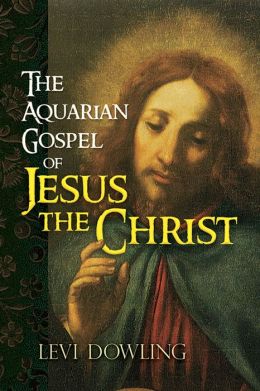
The Aquarian Gospel of Jesus the Christ by Levi
The lost 18 years of Jesus has always intrigued me since my earliest days at Catholic high school. I remember sitting in the classroom studying the Life of Christ, and when the topic came up – when Jesus was between 12 and 30 years of age – my priest teachers tried to sell us the fact that this part of his life was a mystery and we’ll never know what happened – we just have to accept it. Well, I never accepted their sales pitch. On Christmas 1975, my brother gave me a gift that was to lead to a beginning of an understanding of these lost years and more: The Aquarian Gospel of Jesus the Christ by LEVI.
The original paperback edition I still have says the book was published in 1972 by DeVorss & Company. The book was written by Levi H. Dowling – simply known as LEVI – and he first published it in 1908 – three years before his death.
The full title of the book is “The Aquarian Gospel of Jesus the Christ: The Philosophic and Practical Basis of the Religion of the Aquarian Age of the World and of the Church Universal.” The Aquarian Age denotes the human race as standing on the cusp of the Piscean-Aquarian Ages. Today we call this the process of Ascension or The Great Shift or The Great Awakening into Unity Consciousness.
He claimed it was the true story of the life of Jesus, including “the lost eighteen years so strangely silent in the New Testament,” and how he attained Christ consciousness, including a period spent traveling and learning from the masters, seers and wise men in the temples and schools of Tibet, Egypt, India, Persia and Greece. Dowling claimed to have transcribed it from the Akashic Records in the early morning hours from two to six - the absolutely "quiet hours.”
Levi H. Dowling (1844 - 1911) was an American preacher. He was born in Bellville, Ohio. At the age of thirteen, in his first public debate, he took the negative side against a Presbyterian elder on "The Everlasting Punishment of the Wicked." He began preaching at the age of sixteen; and at the age of eighteen was pastor of a small church. He entered the United States Army at the age of twenty, as a chaplain, and served in this capacity to the end of the Civil War. Dowling preached President Lincoln's funeral service to Union troops in Illinois. In 1866-1867, he was a student at Northwestern Christian University at Indianapolis, Indiana.
He was a graduate of two medical colleges, and practiced medicine for a number of years. He retired from the medical profession to resume literary work. He was the author of two spiritual healing books “Self-Culture” and “Biopneuma: The Science of the Great Breath.” He also taught chemistry, toxicology, physiology, histology, and lectured on the use of electricity in medicine.
Even as a child, he was impressed with the sensitiveness of the finer ethers, and believed that in some manner they were sensitized plates on which sounds, even thoughts, were recorded. He studied etheric vibration, determined to solve the great mysteries of the heavens for himself. Forty years he spent in study and silent meditation, and allegedly eventually he found himself in that stage of spiritual consciousness that permitted him to enter the domain of these superfine ethers, and become familiar with their mysteries.
During the meditation, it was claimed that he was able to repeat events, as many times as necessary, in order to produce a perfect transcript. Today, we call this process “channeling.” He spent many months transcribing the events he supposedly witnessed – in “The Book of God’s Remembrance” also known as The Akashic Records, and that every thought of every living thing is recorded there. His transcription is commonly known as “The Aquarian Gospel.” He claimed that as a boy, he also had a vision in which he was told that he was to "build a white city." This vision was repeated three times over a period of years. The building of the "white city" was the book “The Aquarian Gospel of Jesus the Christ.”
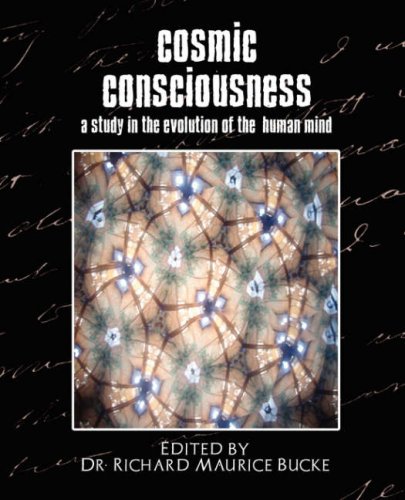
Cosmic Consciousness – A Study in the Evolution of the Human Mind by Richard Maurice Bucke, M.D.
I found this book in a used bookstore in Honolulu, Hawaii in 1995. Canadian medical doctor, Richard Maurice Bucke, wrote this timeless book. It was first published in 1898 by Messrs. Innes of Philadelphia in a limited edition of 500 copies, according the book’s introduction “The Man and the Book,” but many sources put the publication date in the year 1901. Nevertheless, Bucke did not live long enough to see the success of his own book, and died on an exceptionally clear wintry night in 1902 when he slipped on a patch of ice on his veranda at his home while watching the stars.
“Cosmic Consciousness” is a project that Dr. Bucke researched and wrote over four years. It became his magnum opus – a classic investigation into the development of man’s mystic relation to the Infinite. Groups of mystics and religious seekers have discovered it ever since. Alan Watts was an advocate of this book. In it, Bucke describes his own experience of Illumination in the spring of 1872 at the age of 35, and that of his contemporaries (most notably Walt Whitman, a personal friend of Dr. Bucke), and the experiences and outlook of 36 historical figures including Buddha, Jesus, Paul, Plotinus, Muhammad, Dante, Francis Bacon, William Blake, Walt Whitman, and Saint John of the Cross.
With regards to the religious leaders in the book, Dr. Bucke proposes that all the religious leaders of all religions throughout all history began their missions with a common subjective experience that he calls “Cosmic Consciousness.” Bucke developes a theory involving three stages in the development of consciousness: the simple consciousness of animals; the self-consciousness of the mass of humanity (encompassing reason, imagination, etc.); and cosmic consciousness – an emerging faculty and the next stage of human development.
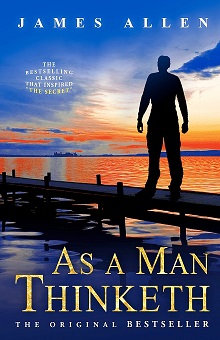
"As a Man Thinketh" and The Complete Works of James Allen
“As a Man Thinketh” by James Allen was the first book I read about the Law of Attraction – how we attract what we think about. I read it shortly after my enlightenment in 1969. It had a profound effect on how I viewed the power of the mind, and it contributed to my continuing transformation from an outer-directed life to an inner-directed life.
James Allen (1864-1912) was a British philosophical writer known for his inspirational books and poetry and as a pioneer of the self-help movement. His best known work, “As a Man Thinketh,” has been mass-produced since its publication in 1903. It has been a source of inspiration to motivational and self-help authors.
It was described by Allen as dealing “with the power of thought, and particularly with the use and application of thought to happy and beautiful issues. I have tried to make the book simple, so that all can easily grasp and follow its teaching, and put into practice the methods which it advises. It shows how, in his own thought—world, each man holds the key to every condition, good or bad, that enters into his life, and that, by working patiently and intelligently upon his thoughts, he may remake his life, and transform his circumstances. The book can be carried in the pocket. It is a book that will help you to help yourself.”
The title is influenced by a verse in the Bible from the Book of Proverbs, chapter 23, verse 7: "As a man thinketh in his heart, so is he." The small work eventually became read around the world and brought Allen posthumous fame as one of the pioneering figures of modern inspirational thought.
The book's minor audience allowed Allen to quit working for British manufacturing firms and pursue his writing and editing career. In 1902 Allen began to publish his own spiritual magazine, The Light of Reason, later retitled The Epoch. In 1903, the Allen family retired to the town of Ilfracombe where Allen would spend the rest of his life. Continuing to publish the Epoch, Allen produced more than one book per year until his death in 1912. There he wrote for nine years, producing 19 works. “The Complete Works of James Allen” is offered here as a free-download.
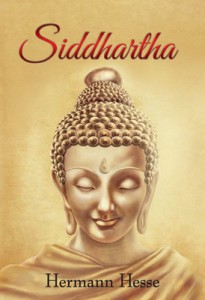
Siddhartha by Hermann Hesse
Siddhartha is a novel by German author Hermann Hesse which deals with the quest to find spiritual enlightenment of a Brahmin’s son named Siddhartha during the time of the Buddha in India. Along the way, he makes several attempts at enlightenment, from the Hindu holy books, from the Samanas – a sect of ascetics, from Kamaswami – a rich merchant, from Kamala – a beautiful courtesan, but rejects all dogmas and doctrines from wise men’s teachings (even the Buddha’s) and finds spiritual fulfillment as a ferryman that listens to the river.
The word Siddhartha is made up of two words in the Sanskrit language, siddha (gotten) + artha (meaning or wealth). The two words together mean “one who has found meaning (of existence)” or “he who has attained his goals.” The Buddha’s name, before his renunciation, was Prince Siddhartha Gautama. In this Hesse’s book, the Buddha is referred to as “Gotama.”
The book, Hesse’s ninth novel, is written in a simple, yet powerful lyrical style. It was first published in 1922, after Hesse had spent some time in India in the first decade of the 20th century. It was published in the U.S. in 1951 and became influential during the transformational 1960’s.
Hermann Hesse (1877–1962) was a German-born Swiss poet, novelist, short story author, essayist, and painter. His best-known works include Steppenwolf, Siddhartha, and The Glass Bead Game, each of which explores an individual's search for authenticity, self-knowledge and spirituality. In 1946, he received the Nobel Prize in Literature.
From childhood, Hesse appeared headstrong and hard for his family to handle. He showed signs of serious depression as early as his first year at school. His grandfather Hermann Gundert, a doctor of philosophy and fluent in multiple languages, encouraged the boy to read widely, giving him access to his library, which was filled with the works of world literature. All this instilled a sense in him that he was a citizen of the world. Hesse showed a precocious ability to rhyme, and by age 13-14 (1889–90) had decided that he wanted to be a writer.
His breakthrough came with the novel “Peter Camenzind” in 1903, and its popularity spread throughout Germany.
Sigmund Freud the novel as one of his favorite readings.
In the 1950s, Hesse's popularity began to wane, while literature critics and intellectuals turned their attention to other subjects. In 1965, two years after his death, the sales of Hesse's books by his publisher Suhrkamp reached an all-time low. However, Hesse's posthumously published writings, including letters and previously unknown pieces of prose, contributed to a new level of understanding and appreciation of his works.
His works were still relatively little-read in the United States, despite his status as a Nobel laureate. A memorial published in the New York Times went so far as to claim that Hesse's works were largely "inaccessible" for American readers.
The situation changed in the mid-1960s, when Hesse's works suddenly became bestsellers in the United States. The revival in popularity of Hesse's works has been credited to their association with some of the popular themes of the 1960s counterculture (or hippie) movement. In particular, the quest-for-enlightenment theme of Siddhartha, Journey to the East, and Narcissus and Goldmund resonated with those espousing counter-cultural ideals. To a large part, the Hesse boom in the United States can be traced back to enthusiastic writings by two influential counter-culture figures: Colin Wilson and Timothy Leary.
From the United States, the Hesse renaissance spread to other parts of the world, and even back to Germany: more than 800,000 copies were sold in the German-speaking world in 1972–1973. In a space of just a few years, Hesse became the most widely read and translated European author of the 20th century.
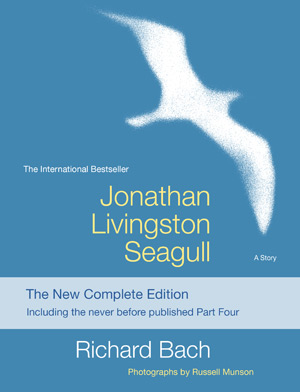
Jonathan Livingston Seagull by Richard Bach
This international bestseller has captured readers’ imaginations since the 1970’s. Richard Bach’s novella reveals the story of Jonathan, a seagull whose passion for flying makes him different from other gulls.
Jonathan’s wish to perfect his flying results in being outcast from his group. At first devastating, the experience culminates in him moving to a “higher plane” where he meets other gulls like him, and his subsequent return to his flock. Jonathan is a symbol to all those who refuse to conform for the sake of conforming, instead teaching love, forgiveness, and how to reach your true potential.
Flight is indeed the metaphor that makes the story soar. Ultimately this is a fable about the importance of seeking a higher purpose in life, even if your flock, tribe, or neighborhood finds your ambition threatening. By not compromising his higher vision, Jonathan gets the ultimate payoff: transcendence. Ultimately, he learns the meaning of love and compassion.
It was first published in 1970, and by the end of 1972, over a million copies were in print. Reader's Digest published a condensed version, and the book reached the top of the New York Times Best Seller list, where it remained for 38 weeks. In 1972 and 1973, the book topped the Publishers Weekly list of bestselling novels in the United States. In 2014 the book was reissued as Jonathan Livingston Seagull: The Complete Edition, which added a 17-page fourth part to the story.
The book was made into an American film in 1973 directed by Hall Bartlett. The film was produced by filming actual seagulls, then superimposing human dialogue over it. The film's voice-overs included actors James Franciscus in the title role, and Philip Ahn as his mentor, Chang.
Whereas the original novella was a commercial success, the film version was poorly received by critics and barely broke even at the box office, though it was nominated for two Academy Awards, for cinematography and editing. The soundtrack album, written and recorded by Neil Diamond, was a critical and commercial success, winning a Golden Globe Award and a Grammy Award.
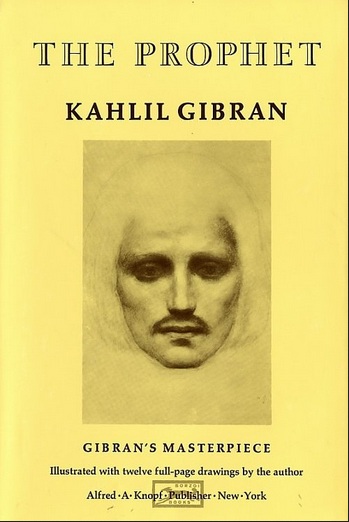
The Prophet by Khalil Gibran
I received this book as a wedding gift in 1980 from a Lebanese-American woman that I married and who loved the writings of this man. I had never read the book before then. I still have the book today and refer to it occasionally. It’s one of those books I treasure in my evolvement towards love, joy and peace.
Khalil Gibran (1883-1931) was a Lebanese-American artist, poet, and writer of the New York Pen League. Born in the town of Bsharri in the Mount Lebanon Mutasarrifate, Ottoman Empire (north of modern-day Lebanon), as a young man he immigrated with his family to the United States, where he studied art and began his literary career, writing in both English and Arabic. In the Arab world, Gibran is regarded as a literary and political rebel. His romantic style was at the heart of a renaissance in modern Arabic literature, especially prose poetry, breaking away from the classical school. In Lebanon, he is still celebrated as a literary hero.
He is chiefly known in the English-speaking world for his 1923 book “The Prophet,” an early example of inspirational fiction including a series of philosophical essays written in poetic English prose. The book sold well despite a cool critical reception, gaining popularity in the 1930s and again especially in the 1960s counterculture. Gibran is the third best-selling poet of all time, behind Shakespeare and Laozi (Lao-Tzu).

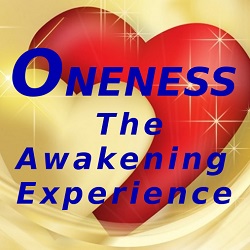
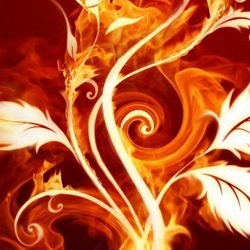


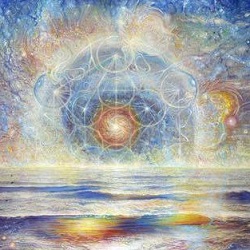










































|
